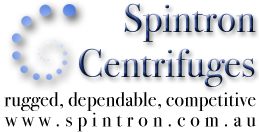Description
The Anderson Baird-Parker direct plate method for E. coli has a number of advantages over the MPN technique. Fewer manipulations are involved and results are available in 24 hours. 0.5-1.0 ml samples of the test homogenates are applied to the cellulose acetate membranes which have been aseptically placed on the dried Tryptone Bile Agar plates. After incubation, the membrane is carefully removed and placed in contact with the indole reagent for 5 minutes. See outline of technique below. Indole producing colonies which are presumed to be E. coli are pink. A few other isolates, for example Klebsiella oxytoca will mimic E. coli in ABP counts.
Because the method utilises the ability of E. coli to produce indole from tryptophan at 44°C, rather than its ability to ferment lactose, higher numbers of positive results are obtained. Ewing reported that only 90% of Escherichia strains produced acid from lactose within 48 hours, whereas 99% of strains produced indole. It permits detection of anaerogenic and slow lactose fermenting strains of E. coli and was found by the International Commission on Microbiological Specifications for Foods to be a more appropriate method than MPN for sampling of raw meat because results were less variable, recovery from frozen samples was higher, test time was reduced and less medium was required to perform the test.




